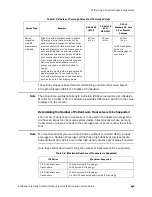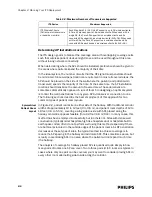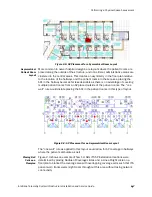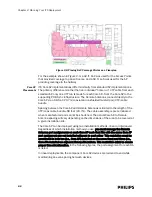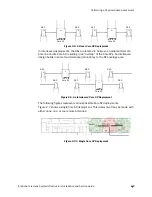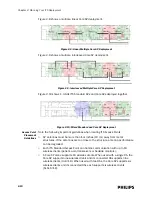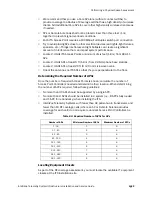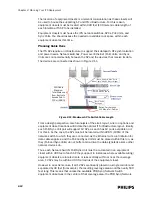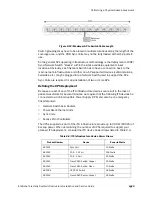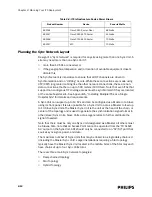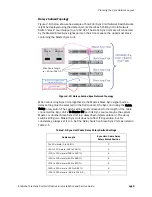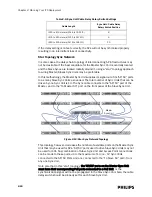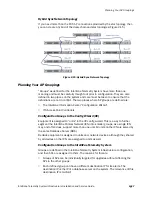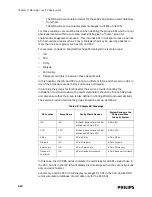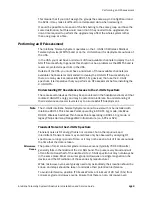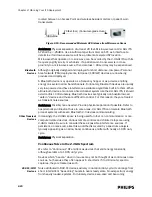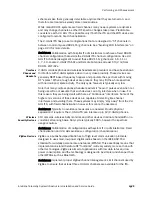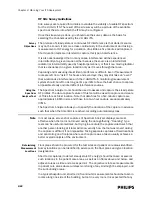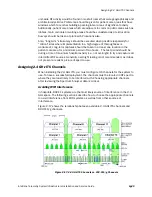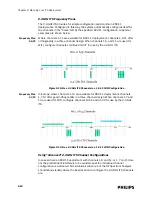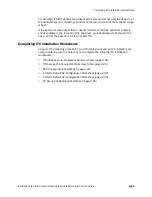
Performing an RF Assessment
IntelliVue Telemetry System Infrastructure Installation and Service Guide
2
-
19
This means that if you don’t assign the groups the same way in Config Wizard and
the APCs, it may make it difficult to correlate alert data when reviewing it.
It would be possible to make all of the APs belong to the same group and have the
same destination, but this would mean that if they needed to be upgraded, the
down time required to perform the upgrade may affect the whole system rather
than one group at a time.
Performing an RF Assessment
The IntelliVue Telemetry System operates on the 1.4 GHz US Wireless Medical
Telemetry Service (WMTS) band or on the 2.4 GHz band for deployments outside of
the USA.
In the USA, you must have a minimum of three available channels to deploy the 1.4
GHz ITS successfully. In general, this should not be a problem as the WMTS band is
reserved, protected spectrum in the USA.
Outside of the USA, you must have a minimum of three available channels (six
available channels is recommended) to deploy the 2.4 GHz ITS successfully. As
there are many devices (especially 802.11 b/g devices) that use the 2.4 GHz
spectrum, it is imperative that you perform an RF assessment before installing the
2.4 GHz ITS.
Understanding RF Coexistence Issues in the 2.4 GHz Spectrum
There are several devices that may be encountered in the hospital environment that
radiate 2.4GHz RF energy and may be potential interferers. An understanding of
their existence and power levels is key to a successful ITS deployment.
Note
The 2.4 GHz IntelliVue Telemetry System cannot co-exist with or be installed with
IntelliVue 802.11 Thick Access Points operating in 802.11 b/g mode, IntelliVue
802.11 Wireless Switches/Thin Access Points operating in 802.11 b/g mode, or
legacy Philips Harmony/RangeLAN2 infrastructure (i.e., APCs or APs).
Transient Noise in the 2.4 GHz Spectrum
Transient noise is RF energy that is not constant, but rather spurious and
intermittent. Transient noise may sometimes only be observed by analyzing RF
spectra over a longer period of time, or it may not be seen at all of it occurs outside
the time that the data is taken.
Microwave
Ovens
The pulse of most consumer grade microwave ovens (typically 700-1300 watts)
generally falls in the middle of the 2.4 GHz band. The pulse is very broad and will
often affect at least half of the usable 2.4 to 2.5 GHz spectra but may not always be
in the same place. Most consumer grade microwaves are single magnetron tube
devices and the RF radiation of these varies by manufacturer.
While microwave ovens are typically used only periodically, their location should be
known and steps should be taken to minimize their potential interference.
To avoid interference, position ITS Access Points a minimum of 20 feet (6 m) from
consumer-grade microwave ovens. Ensure that there is not a microwave oven
Summary of Contents for IntelliVue Telemetry System Infrastructure
Page 8: ...viii Contents ...
Page 14: ...xiv About This Guide ...
Page 100: ...3 22 Chapter 3 Installing and Configuring the ITS Figure 3 10 APC Filter Configuration Screen ...
Page 162: ...5 12 Chapter 5 Troubleshooting and Testing ...
Page 168: ...A 6 Chapter A Installing Multiple ITSs at a Single Hospital Site ...
Page 180: ...Index 8 Index ...

